Mongolia: from yurts to shopping malls (and back)
I am driving through the vast Mongolian steppe. My friend and I are just finishing an epic trip (2700 km on dirt bikes first, followed by an off-road car odyssey) through the country that is on a bucket list of most travelers but many of them never end up coming here. It’s far. The weather can be harsh, and often is. Visas are required for most foreigners. The landscape is stunning almost surreal. Every meal includes gargantuan amounts of meat. Let me tell you one thing: I have visited many countries over the past 30 years. Mongolia captured my heart: natural beauty beyond words, authentic nomadic culture, tough but very welcoming people, wild horses freely roaming around, creeping-in urbanization and ‘westernization’. A powerful combination of forces that are attacking all our senses and thoughts, creating simultaneously an unparalleled feeling of freedom as well as concerns.
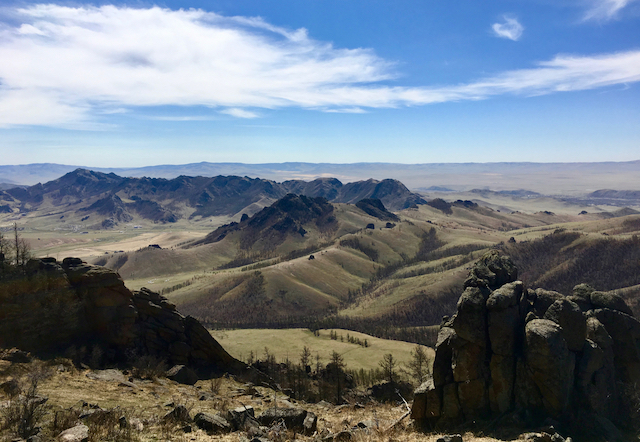
Let’s not write about nature (or fitness ;)) today. You could google some pictures or watch the video done by my dear friend and brilliant video maker Lawrence below the post to get a glimpse of this beautiful country. I would like to provoke your thoughts today about impact of tourism and urbanization on the ancient and minimalist yet rich nomadic culture that still persists there. The topic, that I became somehow against my will really concerned about perhaps as a result of living 8 years in Dubai followed by several years in Bali. Let’s explore.
There are three distinct worlds in this country 3x of France or 4x of Germany with population of 3 million people: vast, mostly untouched steppe / mountains / desert; post-soviet towns with crumbling buildings where time has stopped; fast-pace developing capital of Ulaanbaatar. If you land in Ulaanbaatar and visit the new Shangri-La mall, you might feel like in any glittering ‘cathedral of shopping’ around the world: shiny international brands, new Mongolian high-society on high heels, expensive coffee shops. The city is clogged with traffic, many of the cars being last model of Toyota Landcruiser (with tinted dark windows). Suburban high-rise buildings sprawl everywhere to meet housing demands of the new riches. It screams ‘development & growth’ and wants you to scream ‘not so fast’! To no avail, of course – people want to live ‘better lives’, whatever that means.
After you make it through the tightly packed traffic and reach the city outskirts, the landscape starts to change almost instantly. First, a belt around the capital with mixture of picturesque small houses each having a ger next to it (‘ger’ is a Mongolian word for a yurt, traditional round nomadic tent-like structure). Those are families who came to the capital with the vision of better opportunities or after one of the bone-chilling winters killed all their livestock. Families, who were attracted by the city lights, but by no means could afford one of the newly built apartments. I was told that each family keeps the ger next to their house because it is much easier to survive winter in a ger than in a house. I still hope that they also want to preserve at least some part of their nomadic lifestyle.
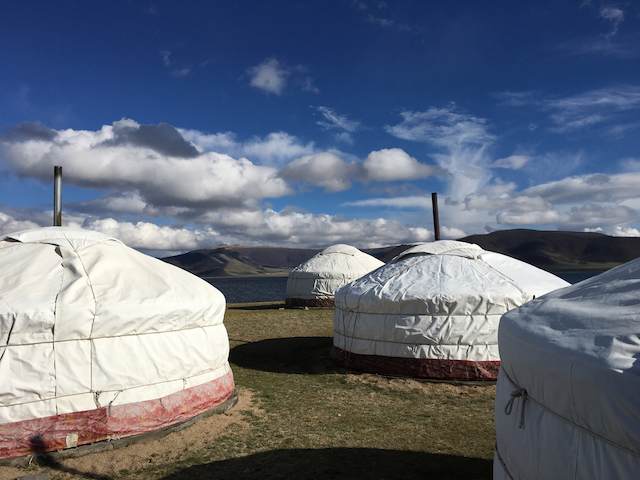
When you swoosh past the ‘house-ger’ compounds, that’s where things really start happening. The landscape reveals itself in an expansive kaleidoscope of immense size and color as if it was released from the human wrench. This is the Mongolia so much sought after by the few adventurous tourists willing to make the arduous journey. The reward – herds of wild horses, sheep, cows and goats grazing on the gently sloping grass fields. Birds of prey. Cranes, wild geese and many other bird species. Marmots, squirrels, little mice that run around the fields. Even the Przewalski horse, perhaps the only surviving real wild horse on the planet live in one of the national parks. And nomads, of course.
The first time you spot a nomad, it feels almost surreal. A figure wrapped around in a traditional colorful coat trotting on his horse (or lately on a motorbike of Chinese provenience) across seemingly endless land. Their ger camps – usually one or two gers with animal enclosures – often hide in the shadow of a mountain in an attempt to shield themselves from the unrelenting winds. With vast distance among them, neighbors often must ride for more than an hour to share information or each other’s company. So romantic! Wait until you visit one of the families. Note for travellers: such encounter could be easily organized by your tour operator or you could just arrive to one of the ger camps and try your luck. Note that English is usually not the language that would be much useful in a countryside here.
During your visit you will learn about their lives and what it means to be a nomad. Romantic feelings continue realizing that the ger’s interior is simply yet beautifully decorated with traditional colors and photographs from important family moments. Two or three beds that serve as sofas during the day and sleeping beds at night. The stove in the middle of the ger is used effectively for both heating and cooking (remember there is no electricity or running water). A couple of small cupboards hide a few family possessions, usually food stores, dishes and spare cloths. If you thought about your life as minimalistic, well, visit a Mongolian nomadic family to get a reality check!
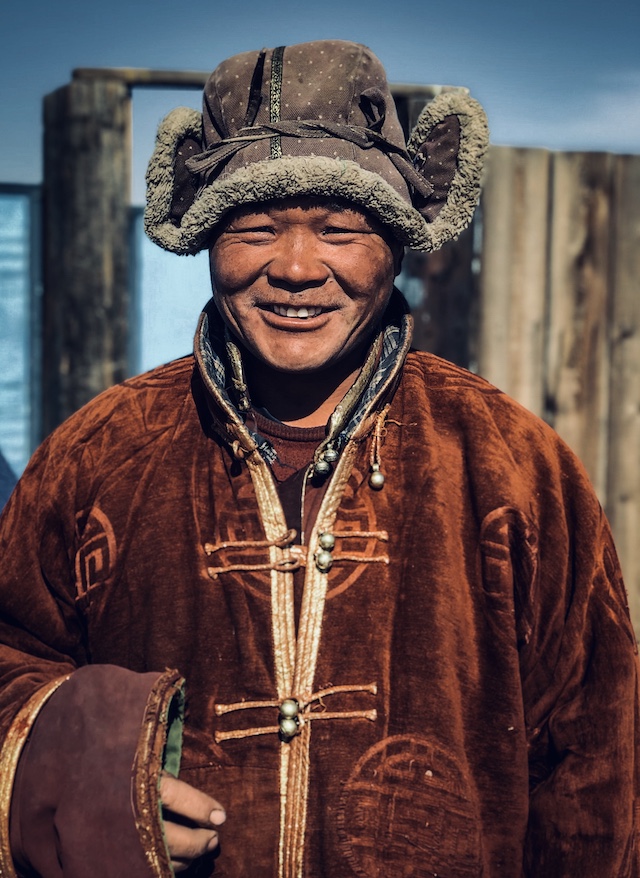
The local faces are viscerally etched with the reminder – life is not easy here. Our host’s – a man in his fifties – face was dark, wrinkled and dry from burning sun and strong winds. Yet, most of his wrinkles seem to be from constant smile that kept illuminating his dark skin. We were told stories about how to manage being outdoors year-round, all the while caring for the animals, how they move around the country, usually 2-3 times a year either to find fresh pastures or hide from winter when temperatures easily drop to -30*C or even lower. How large herds of animals make them rather wealthy even to the point of being able to afford buying an apartment in Ulaanbaatar or send their children to better schools. How one ferocious winter can kill all their animals – the only source of income – perhaps except for small amounts of money received from curious foreign visitors like ourselves. The visit continues with a delicious meal, a kind of meat-pasta soup cooked in front of us at the wood and horse droppings fired stove. More talk, more laughter, more connections between humans from seemingly other sides of this world. They explain about the annual summer festival Naadam, where whole Mongolia gathers on many venues under the blue sky to compete in horse riding, archery, wrestling and in some places hunting with eagles. Our visit finishes with a ritual of tobacco sniffing, where we learn how people unwrap their sniff flasks from beautifully decorated pieces of fabric, exchange them and sniff together. Beware – if you give your flask to the other person, the cap has to be slightly open, that’s a sign of friendship. If you extend your flask closed, that means you consider your visitor an enemy! Sniff powder is quite strong so be gentle on yourself with the amount you intend to send up your nostrils…
What a life. What an experience! Even though I can’t help wondering how this culture can sustain itself in the age of fashion brands, Instagram and urbanization. What will be the result of nomadic families sending their kids to schools in the capital? Will they come back to live the lives of their parents or prefer a job behind the bank counter? In the city, they for sure will find better education but will this education lead to a happier life? I have my doubts. When visiting our allegedly ‘developed’ cities in the West with hordes of people running around in a rat race, working hard to sustain the family lifestyle they have chosen, gobbling up large amounts of medicaments, alcohol and other stuff to keep them going… it is hard not to see that ‘development’ does not always lead to the development.
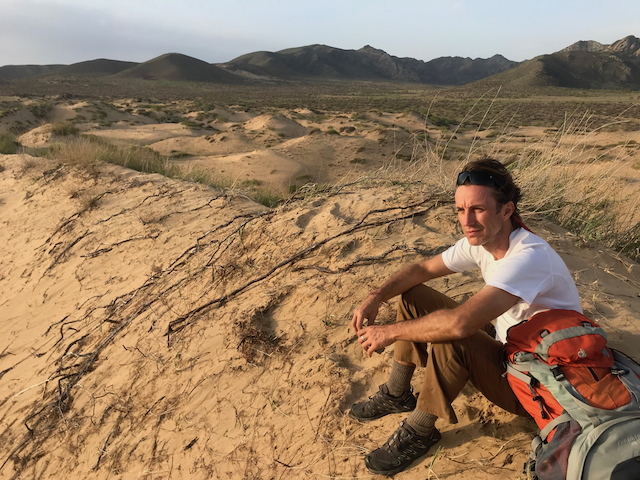
I still remain optimistic though in the case of Mongolia. Why, you may ask? The country nature possesses such beauty and potential that tourism could become one of the stable sources of income in future. Luckily, mass tourism will never make it here – no beaches, no cheap alcohol, no package holidays or large resorts. The government should ideally make sure to promote sustainable eco-tourism for adventurous visitors who are in search of experiencing a genuine, local culture that has survived centuries. In return, such careful tourism management will contribute to preserving and perhaps even strengthening this unique cultural heritage. There are other challenges – waste management and pollution in the capital to name few – but let’s leave them to this powerful nation to sort out. Chinggis Khaan managed to conquer one third of the world hundreds years ago, there is no reason to doubt that these rock-hard people won’t find some solutions even today.
We finished the journey back where we started from – the Shangri-La shopping mall in Ulaanbaatar. True to our usual habits – and perhaps to support one of the local producers – we ransacked the shop with beautiful cashmere clothing to get presents for all the family members. I bought a pair of socks. When I wear them now back home and close my eyes, the immense Mongolian steppe starts unfolding again behind my eye lids. We will be back.
So, if you feel inspired to learn more about this beautiful country landlocked between Russia and China, watch one of the stunning videos below, ask me any questions in the comments or send me an email as usually – I will read all of them and try to respond to as many of you as possible.
If you enjoyed this story – there is more! We went back to Mongolia in 2022 and here is another incredible adventure including some beautiful images: Mongolia on a dirtbike – we are back!
There are more adventures (in order to #survivemylife, of course). One of them, clearly out of ordinary, is how we survived sailing around Sumba island where our boat crashed into a coral reef in the middle of the night.

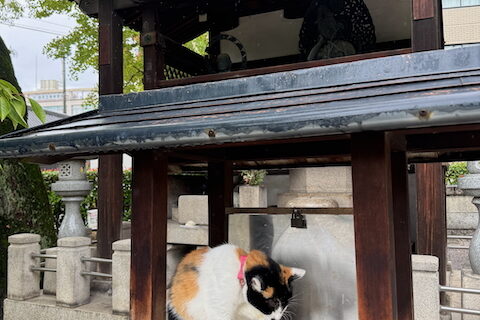


Pingback: Mongolsko: z jurty do nákupního centra (a zpět) - www.tristiri.cz